

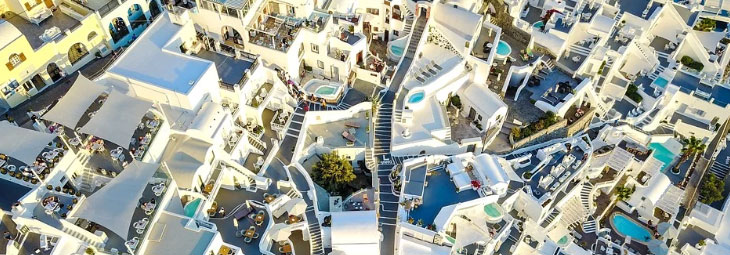
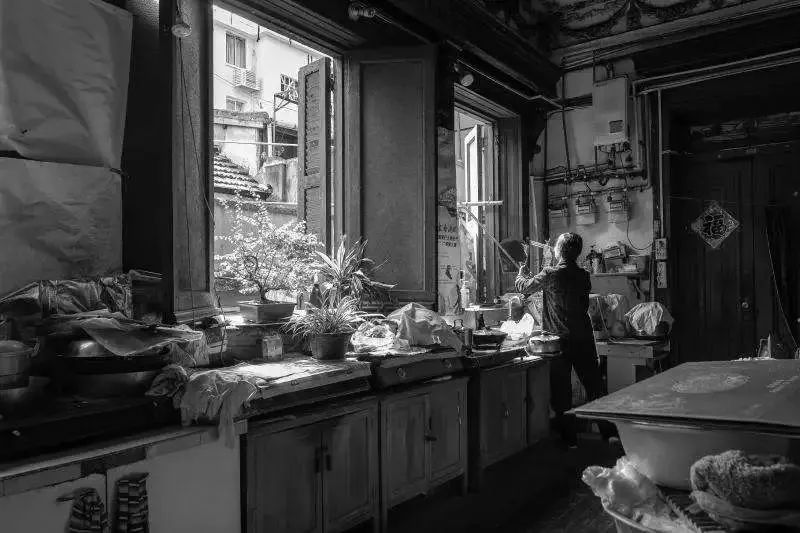
Source: Shanghai photographer and historical recorder Xi Zi
Zhangjia Garden (referred to as "Zhang Garden"), built in 1882, is an Shikumen alley neighborhood surrounded by the busy high-rise buildings of Nanjing West Road, bringing together 28 different architectural styles since the opening of Shanghai. It was the largest public park in Shanghai at the end of the Qing Dynasty and was known as "the first garden on the sea".
As the largest and most well-preserved representative of Shanghai Shikumen architectural complex,the renewal of Zhang Garden has carried out multi-stage planning research and practical work under the guidance of "retention, renovation and demolition", constantly refined the preservation and protection methods of historical buildings, paid attention to the coordination between old and new Spaces, and integrated into the complex needs of above and underground space and public elements in the current development of the city. The process of renewal try to explore the implementation-oriented conservation concept and technology of historical features.
1. The Origin of Zhang Garden
Zhang Garden used to be one of the three major private gardens in Shanghai. Later, as a public open garden and urban public center, it gradually developed into a Linong community dominated by old-style Linong. The existing urban texture and Shikumen spatial pattern are well preserved, and the historical style value is high.
With the rapid growth of Shanghai's population and the shortage of housing, it began to appear multi-family living situation.The phenomenon of illegal construction is serious and public space is occupied by non-motor vehicles. Some families can not even provide 1 square meter for the transformation of micro-independent toilets. The decline of community public space and the change of residents' lifestyle have put forward new requirements for Zhang Garden, and it is urgent to further improve the building of regional core image, the building of public open space, the exploration of public interface and historical characteristics, so as to promote the improvement of regional influence and vitality.
A.Historical evolution of Zhang Garden
In 1842, Shanghai opened its port, and the focus of development has always been on the concession. As a result, the area where Zhang Garden is located is located west of the Public Concession, which was still farmland in 1872. From 1872 to 1878, Groome, the manager of the British merchant Hutchison & Co., Ltd., leased 20.25 acres of land to build a Western-style garden.
In 1882, Groome left Shanghai and returned to his motherland. Zhang Shuhe, a merchant from Shanghai, bought the land and named it "Zhang Garden".
In 1885 (the eleventh year of Guangxu), the "Zhang Garden" was officially opened, and the transformation from a private garden to a public garden was a silent protest against the non-opening of the park to the Chinese in the concession, and had a profound impact on the future development of Shanghai gardens.
Zhang Shuhe carefully designed and managed this garden, he changed the characteristics of Jiangnan garden small but not open, pleasing to the eye but not hygienic, imitating the Western garden style, with Western-style buildings, lawns, flowers, green trees, ponds as the elements of garden construction, achieving the characteristics of the scenery of the integration of China and the West.
During this period, Zhang Shuhe continued to expand the scale of Zhang Garden, the largest reached 61.52 acres, the first private garden at that time, known as "the first garden on the sea."
With the continuous expansion of the garden, in order to enrich the entertainment facilities in the garden, Zhang Shuhe built "Arcadia Hall" in the garden, which means peach blossom source. The construction of "Arcadia Hall" made it possible to gather large gatherings, thus profoundly changing the social function of Zhang Garden.
As a private operating garden, the late Qing Dynasty was the golden age of Zhang Garden, bringing together tourists. In particular, Zhang Garden, as an ideal meeting place for progressives in the late Qing Dynasty, recorded the history of Zhang Binglin, Wu Jingheng, Cai Yuanpei, Ma Junwu, Shen Buzhou and other famous figures in modern times who called for change and spread revolutionary ideas, as well as the important historical events of Huo Yuanjia shocking away British strong men and defeating the leader of the Japanese Judo Society, expanding the connotation of Zhang Garden as a commercial private garden, making Zhang Garden the largest public activity place in Shanghai at that time.
In 1919, with the death of Zhang Shuhe, Zhang Garden's land was gradually purchased for real estate development. The "Arcadia Hall" was also dismantled during this period. Zhang Garden's history as a private garden ended there.
As the Shanghai Public Concession continued to expand its city boundaries westward, the plot of Zhang Garden in the 1920s became a hot spot in the eyes of real estate developers. Zhang Garden also gradually became a residential area from a complete commercial private garden plot, but people still habitually call this area "Zhang Garden".
Based on the economic interests of the land, Zhang Garden was split into more than 20 small plots and carried out residential development. Among them, the largest piece has an area of 4.9 acres, and the smallest piece has an area of only 0.5 acres.
In the 1910s, the construction of Murming Road (now Maoming North Road) gave Zhang Garden a frontage interface, attracting the interest of real estate developers, so the land near this road was first carved out of Zhang Garden and sold in three pieces. Therefore, in the following period from 1923 to 1927, three lanes were built successively.
After the completion of the development of the street-facing plots, the subdivisions within the block were gradually developed into various lanes in the 1920s and 1930s. In the middle of the plot, a general lane was formed, which is the extension of today's Taixing Road, Weihai Road 590, which is 9 meters wide. At the mouth of the main lane is located the famous iron archway, which is still standing there.
Under the main alley, there are main alleys and support alleys. The main alleys are available for cars to enter and exit. The structure of the block is rich and has its own logic of generation. By the 1940s, the construction of Lilong in the Zhang Garden area was basically completed.
The subdivided plots in the Zhang Garden area vary in shape and size, and the residential products developed are also exceptionally rich. In terms of the type of building, Zhang Garden Lilong architecture includes four types: Shikumen Lilong Residence, New Lilong Residence, Lilong Mansion and Garden Residence. In terms of scale, there are from single bays to five bays. Stylistically, everything ranged from classicism and eclecticism that prevailed in the early 1920s to Art Deco that prevailed in the late 1920s. The diverse floor plans and architectural groups with various styles and characteristics have attracted the needs of different customer groups in the city for residences.
B. The renewal of Zhang Garden
For a long time after the founding of New China, the architectural texture of Lilong in the Zhang Garden area was completely preserved, and the residential density was greatly increased compared with the beginning of the development of Lilong, 72 tenants living in a Shikumen is common, and the century-old residential buildings can no longer continue to carry high-intensity use. How to improve the living conditions of residents, so that the building space continues to exist, and continue to operate reasonably is a common problem faced by the whole society.
The successive Jing'an District Party Committee and District Government also wanted to start the old reform of Zhang Garden as soon as possible, and finally on September 30, 2018, the old reform of Zhang Garden was launched. The first round of consultation passed 94.22%, the second round of signing reached 97.4%, and in January 2019, Zhang Garden's renewal officially took effect.
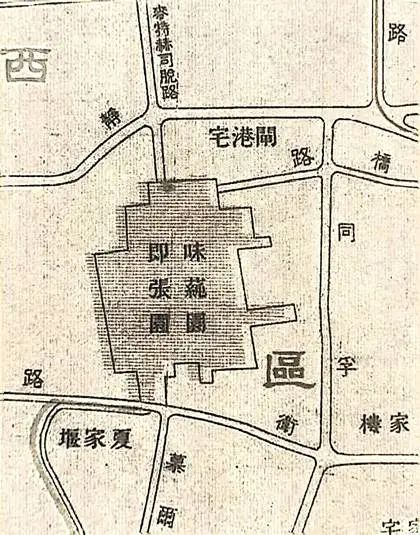
Zhang Garden in the 1918 map [Source: www.china-up.com]
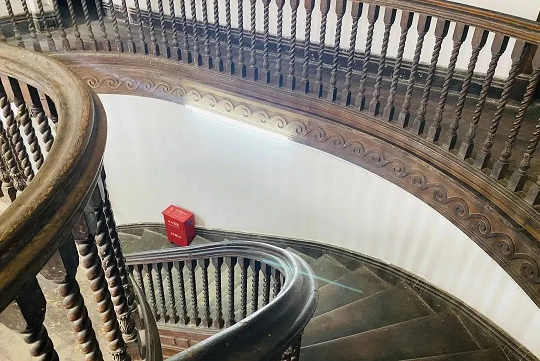
Handrail stairs from inside the building [Source: Ye Ping]
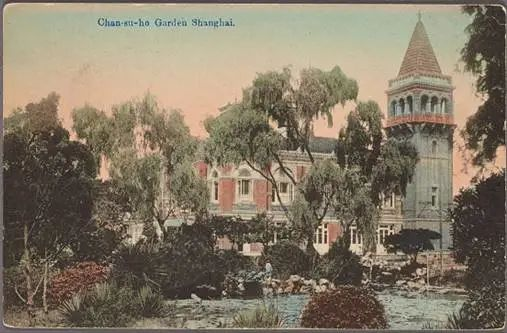
Arcadia Hall on a postcard [Source: www.china-up.com]
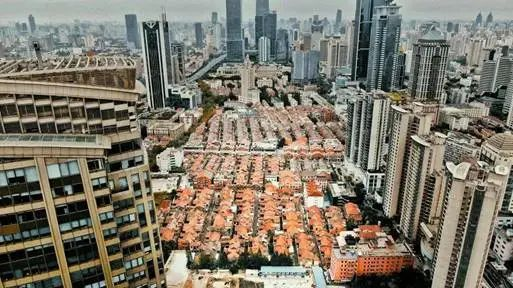
The Aerial view of Zhang Garden [Source: www.china-up.com]
Source:<https://mp.weixin.qq.com/s/OXRlOn93gjFilNKWkhMk4g>
Edited and Translated by Guan Tao